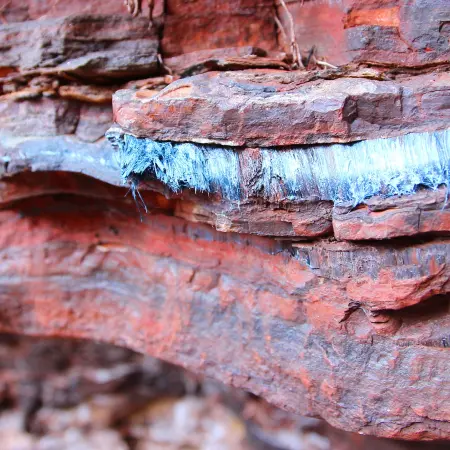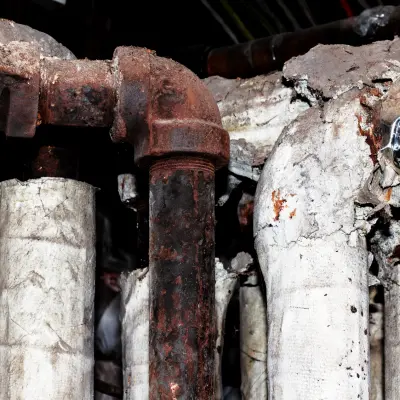ASBESTOS: This naturally occurring mineral, once widely used in construction, is now known to cause serious health problems like mesothelioma and lung cancer. Learn about asbestos exposure risks, where it's found, and how to protect yourself.


For decades, asbestos materials found a place in countless products. Builders added it to cement boards, roofing shingles, and siding panels because it could withstand intense heat and weather conditions. Manufacturers wove it into fabrics, textiles, and fire blankets.
Automotive engineers relied on asbestos to strengthen brake pads and clutch linings, ensuring they held up under friction and high temperatures. The mineral’s versatility and chemical stability made it valuable, and because it was relatively inexpensive, using asbestos seemed like a logical choice for improving product performance.
The story took a turn once health professionals and researchers uncovered that asbestos fibers lodged deep in the lungs can cause devastating harm over time. When materials containing asbestos are disturbed—through cutting, drilling, sanding, or simple wear and tear—microscopic fibers can become airborne. People who inhale these fibers may face long-term health threats. Conditions linked to asbestos exposure include:
Important Note: Asbestos-related diseases usually have a long latency period. Decades can pass before symptoms appear, making early detection difficult. By the time doctors diagnose such conditions, treatment options may be limited, and the outcomes uncertain.
Although asbestos use has declined sharply in recent decades, it remains hidden in many older buildings, vehicles, and machines. Structures built or renovated before the late 20th century may contain asbestos in:


Start by looking up the city in which you or a loved one
were exposed to asbestos
As knowledge spread about asbestos-related illnesses, governments worldwide established strict rules on handling, removing, and disposing of asbestos materials. Many countries now ban or heavily restrict asbestos. In places where it is still legal, strict guidelines limit its use and set permissible exposure levels to protect workers and the public. Regulatory measures often require:
Important Note: These regulations, along with increased public awareness, aim to reduce exposure risks and shield communities from asbestos-related diseases.
Visual inspections cannot confirm asbestos. To determine if a material contains asbestos, a certified inspector takes samples and sends them to an accredited laboratory. Using high-powered microscopes and precise analytical methods, experts identify and quantify asbestos fibers. The results form the basis for responsible decision-making about whether to remove, seal, or simply monitor the material.
Not all asbestos needs immediate removal. Sometimes, if the material is stable, not easily crumbled, and unlikely to be disturbed, leaving it in place may be the best approach. In such cases, professionals might encapsulate or enclose asbestos-containing materials to prevent fibers from escaping.
If removal is necessary—often the case during renovations or when materials are deteriorating—trained abatement teams follow strict guidelines. They isolate the work area, maintain negative air pressure to keep fibers from spreading, use HEPA filtration systems, and apply wet methods to reduce dust. Workers wear protective suits, gloves, and respirators. After removal, they thoroughly clean the area to prevent lingering contamination.
Homeowners should remain cautious when dealing with older construction materials. Avoid drilling, sanding, or sawing suspicious components without proper testing. If asbestos is confirmed, consult licensed professionals who understand the legal requirements and health implications.
Employees who may encounter asbestos should receive proper training, protective gear, and regular health screenings. Employers must follow all applicable regulations to maintain a safe environment. Local building authorities, health departments, and reputable consultants can advise on best practices, ensuring compliance and minimizing risks.
Knowledge stands as the best defense against asbestos hazards. Staying updated on local rules, learning about common asbestos-containing materials, and seeking guidance before starting a project in an older property can prevent harmful exposures. Public health agencies and safety organizations offer resources to help identify warning signs, understand risk levels, and find trustworthy testing and removal services.
The legacy of asbestos is a reminder that materials once embraced as miracles of engineering can, over time, reveal hidden dangers. Today’s rigorous standards, improved testing methods, and professional abatement services reflect lessons learned from the past. By acknowledging asbestos risks, following safety regulations, and responding responsibly when asbestos is discovered, communities can preserve the integrity of older buildings while safeguarding human health.
Through these steps, people can enjoy historic structures, engage in responsible renovations, and ensure that future generations inherit safer, healthier spaces free from the invisible threats asbestos once posed.